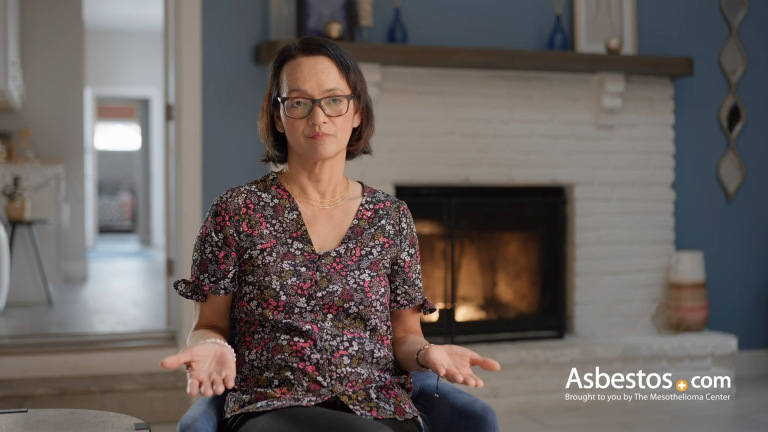How to Prove Asbestos Exposure for a Mesothelioma Claim
To prove asbestos exposure for a mesothelioma legal claim, an attorney will need evidence of your exposure to asbestos products. Mesothelioma attorneys will also gather medical documentation, such as test results and pathology reports, to build your case.
How Can You Prove Asbestos Exposure for a Mesothelioma Lawsuit?
An experienced mesothelioma lawyer can gather evidence to show if you qualify for compensation. The investigation starts with a search for the cause of your asbestos exposure. Lawyers use vast databases to support all legal claims such as mesothelioma lawsuits and claims to asbestos trust funds. Mesothelioma attorneys have proven exposure for hundreds, even thousands, of clients.
- Investigators
-
“Typically, an investigator will come and ask you questions about your exposure. Your memory is an important piece of this,” – Joe Lahav, lawyer and on-site legal advisor at The Mesothelioma Center at Asbestos.com, says.
In addition to work experience, investigators will ask questions about other possible sources of exposure, such as a history of talc use. They have the training to delve into critical details about possible asbestos exposure, ensuring nothing is overlooked.
- Product Identification Tool
-
Joe Lahav explains, “Investigators will present you with a product identification tool or big binder of different products containing asbestos. Sometimes people don’t realize products they worked with contained asbestos. They’ll say, ‘I worked with that gasket.’ Or, ‘I worked with that kind of insulation. I didn’t realize it had asbestos in it.’”
This tool helps identify specific asbestos-containing products you may have encountered. Recognizing these products can significantly strengthen your case, linking your exposure to specific items.
- Records of Job Sites
-
“Investigators will ask you ‘Where were you exposed? What job sites did you work at?’ Good lawyers have records of job sites all over the U.S. where asbestos was heavily used,” Joe Lahav shares.
Law firms maintain extensive records of job sites known for asbestos use. Cross-referencing your work history with these records helps your attorney can pinpoint exact locations where you were likely exposed to asbestos.
- Witness Statements
-
“People that worked with you — your co-workers — are another way to prove your asbestos exposure” Joe Lahav notes.
Witness statements from former co-workers can provide crucial testimony about your exposure to asbestos in the workplace. These statements help corroborate your account and provide additional evidence to support your claim.
Your mesothelioma law firm will gather key documents that start with a diagnosis of an asbestos-related disease. Your work history, job site records and witness statements come next. Documentation may include your doctor’s statement. It must link your asbestos exposure to your diagnosis and should include blood tests and imaging scans. They should show the disease’s extent. Lastly, add the contacts of former co-workers, employment records and pay stubs.
Proving Secondary Asbestos Exposure
A person can expose themselves to dangerous asbestos fibers in multiple ways. The two main ways include primary and secondary exposure.
- Primary asbestos exposure: When you’re exposed to asbestos firsthand. Breathing in airborne asbestos fibers. The fibers can cause diseases such as mesothelioma, lung cancer and asbestosis.
- Secondary asbestos exposure: Can happen when someone comes in contact with another person with primary asbestos exposure. Those with primary exposure may carry asbestos fibers home on their clothes, hair or skin. Secondary health risks are the same as those from primary asbestos exposure.
Even if the person with primary asbestos exposure has died, lawyers can still prove secondary exposure. They gather documents of the primary person’s work history and interview surviving colleagues and family for their accounts of secondary exposure.
This evidence helps lawyers build a case of secondary asbestos exposure. They help plaintiffs hold those responsible accountable.
“My dad worked in the boat business. He would put on his jumpsuit and help out in whatever way he could,” said peritoneal mesothelioma survivor Susan Dickman. “He would come home from work with the jumpsuit on, and he would pick us up with the jumpsuit on. Of course it had asbestos on it.”
- A study in the Journal of Lung Health and Diseases found that 30% of mesothelioma cases are due to secondary asbestos exposure.
- Most asbestos exposures at home affect women, says the American Journal of Industrial Medicine.
- Washing clothes with asbestos fibers raises the risk of mesothelioma and other diseases.
Why Is Proving Asbestos Exposure Important for Legal Claims?
It’s vital to prove asbestos exposure for mesothelioma legal claims. It is the key evidence to hold an asbestos defendant accountable. Without this evidence, your claim cannot proceed.
Providing the right evidence is crucial for all mesothelioma legal claims. This includes personal injury, wrongful death and asbestos trust fund claims. For a favorable resolution, strong proof of asbestos exposure is essential.
A mesothelioma doctor’s diagnosis can confirm the cancer’s cause. But it’s only the starting point. A skilled mesothelioma attorney will gather proof of your exposure to strengthen your claim.
In the discovery phase, your attorney will collect documents and witness testimonies. This evidence boosts the odds of success in a trial or settlement.
“If you know you’ve got clear asbestos exposure — stronger evidence — and you can prove your case more strongly, the defendants are more likely to give you more money because they’re more likely to lose if they have to go to trial,” said lawyer and on-site legal advisor Joe Lahav.
5.0 rating | 150+ reviews | A+ BBB

What Can You Do to Prove Your Asbestos Case?
To prove your asbestos case, gather any documents you can. They should trace your exposure to certain products, companies and the military. You may already have some helpful documents. But a skilled mesothelioma attorney can get more complex evidence for you.
- Blood tests supporting your cancer diagnosis
- Contact information for former co-workers
- Employment records (such as human resources paperwork you may have signed)
- Imaging scans showing the extent of the cancer
- Pathology report proving your mesothelioma diagnosis
- Pay stubs proving past employment
- Physician’s statement connecting your asbestos exposure to your diagnosis
You must gather any medical records that prove your mesothelioma diagnosis. Speak to your health care team. Get all necessary documents and a doctor’s note linking your asbestos exposure to your diagnosis. It’s also important to assemble proof of employment, such as tax records.
Your legal team can also collect other evidence to support your claim. It includes witness testimony from co-workers and experts like radiologists and oncologists. Your lawyer can help you collect everything to build a stronger case.
Your Doctor’s Statement
A doctor’s statement links your mesothelioma to asbestos exposure. This statement is key evidence for your mesothelioma lawsuit. It is vital to proving the link needed for your claim.
Your doctor’s statement should document your diagnosis. It should also include detailed reports on physical exams that were part of the diagnostic process.
What Are the Challenges in Proving Asbestos Exposure?
One of the challenges to proving asbestos exposure is that there is no single reliable way to test someone for asbestos exposure. The most common way is with chest X-rays. But the X-ray has no value for someone exposed to asbestos for a short amount of time. The X-ray cannot detect asbestos fibers. It can show early signs of an asbestos-related disease.
- Long latency period: Asbestos-related disease symptoms may show up decades after exposure.
- Measuring asbestos fibers: It’s hard to quantify the fibers in the air. Especially in temporary workspaces.
- Multiple potential sources: Asbestos fibers can come from many sources. Some people may expose themselves to asbestos multiple times in their life.
Doctors can also perform surgery to find tiny asbestos fibers in lung tissue. This is an invasive test that can be uncomfortable. Researchers can also detect asbestos fibers in mucus, urine or feces. But these tests aren’t reliable for finding asbestos in your lungs. Most people have low levels of asbestos fibers.
Pleural mesothelioma survivor Kim Madril says she experienced exposure to asbestos in her middle school and high school classrooms. She met with one of her teachers, who served as a witness to the exposure. She also reconnected with a fellow auto shop student. He confirmed the conditions and the asbestos products she handled in class.
In the class, Kim worked closely with brakes and clutches. Both are known to contain asbestos. In her art class, she also handled ceramics and clay that contained asbestos. There likely was asbestos in her classrooms, too. Most builders used asbestos products in older U.S. schools.
Commonly Asked Questions About Proving Asbestos Exposure for a Mesothelioma Claim
- What are the steps to filing a mesothelioma lawsuit?
-
It is best to hire an attorney specializing in asbestos litigation and allow them to pursue litigation against the asbestos companies and file claims against the asbestos trusts.
Answered By: Carl Money, Mesothelioma Attorney, Nemeroff Law Firm
- What will navigating the legal process be like?
-
You should not have to navigate the legal process alone. It is best to hire an attorney specializing in asbestos litigation and allow them to pursue litigation against the asbestos companies and file claims against the asbestos trusts.
Answered By: Carl Money, Mesothelioma Attorney, Nemeroff Law Firm
- Can I file a mesothelioma lawsuit if I don’t know where I was exposed to asbestos?
-
Certainly. Many people are unsure of where they were exposed to asbestos. Your mesothelioma attorney will investigate all possible exposure with you.
Answered By: Carl Money, Mesothelioma Attorney, Nemeroff Law Firm
- Can I still prove asbestos exposure if my employer is no longer in business?
-
Yes. Asbestos exposure can often be proven even though your employer is no longer in business.
Answered By: Carl Money, Mesothelioma Attorney, Nemeroff Law Firm




